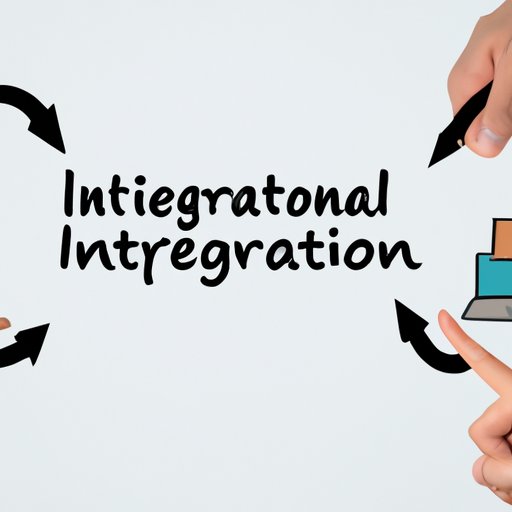
How to Integrate: Tips and Tools for Successful Implementation
Integration is the process of combining two or more systems or processes to function as one cohesive unit. The benefits of integration are many, ranging from increased efficiency and improved decision-making to reduced errors and lower costs. For businesses and organizations of all sizes, integration is critical for achieving goals and staying competitive in a rapidly evolving market. In this article, we’ll explore the steps, tools, and best practices for successful integration, as well as real-world examples of integration in action.
Benefits of Integration
The benefits of integration are many and varied. Integrating different systems or processes can improve efficiency and productivity, reduce errors, and boost data accuracy. Integration can also enhance collaboration and communication among stakeholders, leading to better decision-making and faster time-to-market. For example, integrating a customer relationship management (CRM) system with an email marketing tool can help businesses better target their audience and generate more leads.
Steps to Integration
The process of integrating different systems or processes can be complex, but breaking it down into manageable steps can help simplify the process. The first step is to clearly define the goals of the integration and identify the systems or processes that need to be integrated. From there, stakeholders should work collaboratively to design and implement a plan for integration, while addressing potential roadblocks or challenges along the way. Effective communication and collaboration among all parties is essential for successful integration.
Types of Integration
There are several types of integration, including data, application, and business process integration. Data integration involves combining different data sources to create a unified view of information, such as a data warehouse. Application integration involves connecting different software applications to enable the exchange of data and functionality. Business process integration involves streamlining and automating business processes across different departments or functions. Each type of integration requires different tools and technologies to achieve success.
Selecting the Right Integration Tools and Technologies
Choosing the right tools and technologies is essential for successful integration. Common technologies used in integration include middleware and application programming interfaces (APIs). Middleware is software that connects different systems and applications together, while APIs allow software applications to communicate with each other. When selecting integration tools and technologies, it is important to understand your integration needs, budget, and goals, and choose tools that can scale with your organization.
Best Practices for Successful Integration
Effective planning, testing, and ongoing maintenance are critical for successful integration. Before implementing integration, stakeholders should clearly define goals and requirements, and test the integration for data integrity, security, and accuracy. Ongoing monitoring and maintenance are also essential for ensuring that integrated systems continue to function smoothly and securely.
Overcoming Integration Challenges
Integration can be challenging for a variety of reasons, including legacy systems, lack of resources, and differing technology standards. To overcome these challenges, it is essential to understand the root causes of the challenges and develop a plan for addressing them. For example, investing in technology that can integrate legacy systems or hiring external consultants to assist with integration may be necessary for some organizations.
Role of APIs in Integration
APIs are a powerful tool for integration, enabling software applications to communicate with each other easily and securely. APIs can be used to integrate different systems and applications, making it possible to share data and functionality across different platforms. Many companies are successfully leveraging APIs for integration, such as Lyft, which uses APIs to integrate with other ride-sharing platforms.
Examples of Successful Integration
There are many real-world examples of successful integration in various industries. For example, a healthcare provider may integrate electronic health records (EHR) with a billing system to streamline patient billing and reduce errors. An e-commerce business may integrate an inventory management system with a shipping system to automate order fulfillment and improve customer satisfaction. In both examples, integration leads to increased efficiency, reduced errors, and improved customer outcomes.
Conclusion
Integration is critical for achieving business goals and staying competitive in today’s market. Effective integration requires careful planning, effective communication, and the right tools and technologies. By following best practices, organizations can successfully integrate different systems and processes, leading to improved efficiency, productivity, and decision-making. So, whether you’re a small business owner or a CEO of a large corporation, it’s time to start integrating and see the results pour in.





